 The NAO headlamp is part of the performance of PETZL, a company specialized in lighting technology for sports, outdoor activities and professional activities. The original lamp NAO is very suitable for trail running and outdoor activities where mobility and speed are considerable. The NAO immediately and automatically adapts its two high-performance LEDs in lighting needs for comfort, reduced manual intervention and greater autonomy. NAO is the first Petzl headlamp with REACTIVE LIGHTING technology: a sensor measures and analyzes the amount of perceived brightness. The Zéphyr band is adjustable, and very stable makes the lamp usage time. Belt Kit available NAO (E36R10) as an option, to move the battery pack on the belt and reduce the burden on the head or keep the battery warm in winter.
The NAO headlamp is part of the performance of PETZL, a company specialized in lighting technology for sports, outdoor activities and professional activities. The original lamp NAO is very suitable for trail running and outdoor activities where mobility and speed are considerable. The NAO immediately and automatically adapts its two high-performance LEDs in lighting needs for comfort, reduced manual intervention and greater autonomy. NAO is the first Petzl headlamp with REACTIVE LIGHTING technology: a sensor measures and analyzes the amount of perceived brightness. The Zéphyr band is adjustable, and very stable makes the lamp usage time. Belt Kit available NAO (E36R10) as an option, to move the battery pack on the belt and reduce the burden on the head or keep the battery warm in winter. Continues to grow in quality and quantity, Trapaniman 113, half iron race which saw the participation of over 200 athletes, including individual and relay race.
Continues to grow in quality and quantity, Trapaniman 113, half iron race which saw the participation of over 200 athletes, including individual and relay race.
The men's race saw off several among the strongest performers of the Tricolor, long distance from campionissimo Daniel Fontana, arrived for the first time in Sicily with still fresh in mind the remembrance of his wonderful success at Ironman Los Cabos.
And was he the great protagonist of the men's trial: first came out of the water, in a decidedly more canonical 1900 metres long, over two rounds with Australian and with a little wave and current and make everything more difficult.
Moreover, conditions are ideal for the italo-Argentine representative of DDS that after the first transition has maintained its advantage even in 2 rounds by bike path 41 k, with the wind it to master and a couple of snags challenging to deal with.
On foot, in three rounds from 7 k, Fontana has checked and arrived triumphantly in the main course of San Vito Lo Capo, between two wings of the crowd, jubilant and large warm, on a day which is pretty cool, with a nice burst of water during the final half marathon.
The Fountain behind the fight for the podium was tough, with three athletes who have allowed the winner to slow down the pace.
Stephen Paul, Sebastian Pedraza and Matteo Abdulla (the latter two respectively winners of the first and second edition of Trapaniman) have come out with the water.
Bike Abdulla lost contact, and so in the final 21 k fighting for the podium has been a challenge to two between Paoli and Pedraza: the Argentine/Italian Freezone is strong party, proving that he had rediscovered brilliance and desire to do well, but the Bishop of Forhans Paul managed to sit tight, fit and detach it at the end. At the foot of the podium a weary and satisfied Abdulla.
In the women's race, solo by Martina Dogana: the blue, she registered for the Forhans Team, has kept the head of the race since swimming, continuing to increase its advantage in two later fractions and triumphing with merit alone; on the podium with her are two Sicilian Age Group climbs, Marianna Glue and Dora March.
The race was also valid for the assignment of regional titles: Sicilian specialty samples graduated just Marianna glue and, among men, Gabriele Fotà joint seventh overall.
COMPLETE RANKINGS HERE Here's a video that explains in a simple way how to wear and how to take off a wetsuit triathlon. EC explains Veronica Signorini, Triathlon athlete Cremona Stradivari. Veronica 2XU wetsuits, wearing the same who then find online at www.motusport.it. Good vision
Here's a video that explains in a simple way how to wear and how to take off a wetsuit triathlon. EC explains Veronica Signorini, Triathlon athlete Cremona Stradivari. Veronica 2XU wetsuits, wearing the same who then find online at www.motusport.it. Good visionAlthough the exercises to treat stroke technique, appear to relation by ' runners ', it's good to keep in mind that a little expensive and effective stroke is very useful (not to say crucial) even for a triathlete. A triathlete in training, in fact, should never miss moments dedicated to running the correct gesture in the race. Unfortunately, however, in most cases, this doesn't happen and we tend to overlook things that top athletes know to be extremely strategic and compelling.
To explain, for us to Runner's World and in collaboration with 2XU, we thought Alberto Casadei, strong specialist sporting Group Gold flames. Alberto does not surrender, during his training, to devote precious time to stroke technique exercises. As he explains in this video: 'run with heavy legs from cycling fraction is anything but simple. A good foot support rolled in during resting, dock high, the correct position of the torso, as well as the right arm swing, are a triathlete ever to be missed aspects in training'.
So here's some tutorials that Alberto offers us and which have already a great start to set a correct work on racing technique and to make the most of the last fraction of our races.
One recommendation we feel to get us to Runner's World: from a practical point of view and consider logistics enter technical exercises in exhaust, seating maybe immediately after a slow, but never in close races. The date for this type of stimuli could easily give you a tiny bit of muscle resentments, which of course in the race it is best not to have
In this 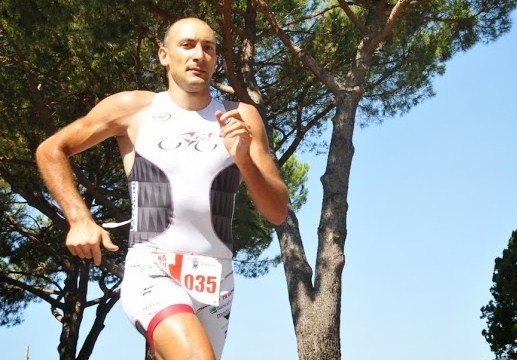 Season, spring is crucial for every athlete in general and Triathlete, train yourself to look for the best form and then test Race Rhythms in the various sections of Swimming, Bike and Racing. The race calendar is packed with appointments, from Duathlon, Triathlon Sprint, Olympic Games, IronMan 70.3, IronMan. After an intense preparation that saw the various training periods, distinguished in the General Period , where they were trained by improving the general conditional aspects (Genarle Force and Resistance), passing through the Specific Period to train in the racing rhythms, then Conclude with the agonistic period . This time of year is definitely indispensable for training at "specific" level and improving the automatisms of the race we are preparing for. This stage of "specific" preparation, regardless of the race distance to which we are preparing, Sprint, Olympic, IronMan 70.3 or IronMan, is essential to organize training sessions that are as close as possible to the race conditions we are going to face. All this will allow us to improve the necessary technical / conditional abilities and qualities to get to the best condition possible during the agonistic time when the races will take over as master.
Season, spring is crucial for every athlete in general and Triathlete, train yourself to look for the best form and then test Race Rhythms in the various sections of Swimming, Bike and Racing. The race calendar is packed with appointments, from Duathlon, Triathlon Sprint, Olympic Games, IronMan 70.3, IronMan. After an intense preparation that saw the various training periods, distinguished in the General Period , where they were trained by improving the general conditional aspects (Genarle Force and Resistance), passing through the Specific Period to train in the racing rhythms, then Conclude with the agonistic period . This time of year is definitely indispensable for training at "specific" level and improving the automatisms of the race we are preparing for. This stage of "specific" preparation, regardless of the race distance to which we are preparing, Sprint, Olympic, IronMan 70.3 or IronMan, is essential to organize training sessions that are as close as possible to the race conditions we are going to face. All this will allow us to improve the necessary technical / conditional abilities and qualities to get to the best condition possible during the agonistic time when the races will take over as master.
SPECIFIC RACE DISTANCE ANALYSIS
If we want to compete for the best of our physical condition by avoiding mistakes that may compromise the race it is critical to study the technical and organizational features of the race in question, and in the case of the Triathlon you can make distinctions between the Brevi race and the Medium / Long race :
Regardless of race distance, stages to be analyzed and focusing on specific workouts, you can distinguish in 5 stages (fractions):
1. Swimming
2. T1 (Swimming / Cycling)
3. Cycling
4. T2 (Cycling / Racing)
5. Race
RACE OF TRANSIT AND RACE
Swimming: Swim sessions require a fluid and productive technique that will allow us to consume as little energy as possible, always maintaining an excellent level of muscular efficiency. Also, as soon as possible it becomes essential to swim in "free water" with the mud in case of need until April / May. Getting married in a group, simulating group departures, organizing exercises to improve free water orientation, learning to keep trajectories in order to avoid waste of energy and waste of time. Insert exercises, both at the pool and at the sea, alternating frontal respiration and breathing on both sides (sx / dx) to get used to any wave conditions of the sea.

SUCTION SEATS EXAMPLES |
Heating | Central Party | regeneration |
200mt free style | 5 x 300 or 400mt Rhythm Race rec 50mt back (Every 50mt breathing mode change) | 200mt free style |
200mt free style | 10 x 100mt SAN rec 100mt Rhythm Race | 200mt free style |
200mt freestyle | 5 x 400 or 500mt Rhythm Race rec 50mt back (Every 100mt breathing mode change) | 200mt free style |
T1 (Swimming / Cycling Transition): During this specific Spring season, you should simulate the fraction of Swimming + Transition + Cycling. We can arrange either a pool session if we have the opportunity to have a pool bike roller or roller. Otherwise, if the weather is ideal we can arrange Combined Seat Seats, using a parking lot as a Transition Zone and a Bike Store, then simulating the race with the following steps:
1. 500 / 1000mt swimming by race distance
2. Exit from the water
3. Travel to the transition zone
4. Sweating and Changing Mute
5. Placement of bicycle shoes, helmet, goggles
6. Race with the bike
7. Uphill on the Bike after a demarcation line and start of the Cyclone
Depending on the goal you want to achieve, we can run these steps several times to test and retry the different racing automats, of course the distance of the Swimming should be shorter to simulate multiple repetitions.
Cycling: As far as cycling is concerned, it is the fraction that creates greater organizational discomfort due to the time it takes to devote to this fraction, always depending on the race distance we are preparing for. During this time it is preferable to stretch the miles in training, but at the same time it becomes crucial that a lot of the kilometers are run on a route similar to that of the race and that the pace is close to that of the race. Try not to go too far from the point of view of the pedaling rate, as well as inserting sessions near or above the race miles, it is also important to include agility seats and increase the pedaling frequency while always looking for roundness and fluidity. Also, learn how to change relationships and adapt them to the path in a way that best exploits your potential!

CYCLING SESSIONS EXAMPLES |
Heating | Central Party | regeneration |
20Km plain | From 50 to 60km Rhythm Race (Path similar to race) | 20km plain |
10km plain | Along Aerobic Fund 90-110km (40-50km in Ritmo Race) | 10km plain |
20Km plain | Da 60 - 70 km Ritmo Gara (Path similar to race) | 20km plain |
T2 (Cycling / Racing Transition): The most complicated passage of the Triathlon race is definitely Cycling / Racing, both muscular, metabolic and mental. For this reason, it is best to train the Cycling / Racing course. These automatisms can be trained with Fractioned Combinations that allow you to repeat the changes between dueds, improving the sensitivity of the technical gesture, or we can organize training sessions with Specific Combinations , where miles are close to race and try to manage the Race rhythm and all the automatisms inherent in race integration, thus simulating the following phases:
1. Fraction Cycling (mileage according to race to be prepared)
2. Descent from the bike before the Transition zone
3. Race with the bike towards the Transition area
4. Depositing the bike on your area of expertise
5. Suit of the bicycle shoes, helmet, goggles
6. Wear shoes from Running
7. Race to start racing
As mentioned, these phases can be arranged in a single specific solution, or repeated several times throughout the same session to allow more movement assimilation.
Depending on the goal you want to achieve, we can run these steps several times to test and retry the different racing automats, of course the distance of the Swimming should be shorter to simulate multiple repetitions.
Race: Regarding the race, it is crucial during this period to train intensively and specifically to achieve the ultimate goal. Bearing in mind that the race is the last fraction that will lead the triathlete to the finish line, it is important to prepare for the best, although as we know, the race is also conditioned by the previous fractions (Swimming / T1 / Cycling / T2) A good "dry" preparation of the race is an important feature. Then different workouts have to be handled at a racing pace based on the distance we will face, as we have seen before, to simulate combined Cycle / Racing, as however the race takes place after having pedal for several kilometers!

TRAVEL SEATING EXAMPLES |
Heating | Central Party | regeneration |
Slow travel 3km + 10 lengths of 30 "rec 1'00 | Repeat Media 8 -10rip x 1km Rhythm Race Recovery 2'00 -3'00 | Slow Run 2km + 5 lengths of 30 "rec 1'00 |
Slow travel 3km + 10 lengths of 30 "rec 1'00 | Progressive race at 10-15km rhythm (Rhythm increase of 5 "per km every fraction) | Slow Run 2km + 5 lengths of 30 "rec 1'00 |
Slow travel 3km + 10 lengths of 30 "rec 1'00 | Repeated Long 4 x 2km Rhythm Race Recovery 3'00 - 4'00 | Slow Run 2km + 5 lengths of 30 "rec 1'00 |
The Rhythm Race mentioned in the different training sessions refers to the rhythm race that theoretically think of managing in the Triathlon race we are preparing, so if you are preparing an Olympic will be racing for the 10km, IronMan 70.3 Race Rhythm for the Half Marathon, IronMan Rhythm Race for the Marathon. The hard part to handle in "dry" workouts is that of controlling the rhythm of a race, as there is usually a substantial difference between the rhythm of dry racing and the rhythm race after the different fractions and the distance of racing Stretches, and the gap between the rhythm of the "dry race" and the rhythm race is bigger. So the Triathlete must always think he is running in a physical condition of "fatigue", then trying to slow down the racing pace, focusing on the Race Rhythm! Now it is time to train yourself specifically to achieve your goal and enjoy the race in the best conditions.
Good Triathlon at all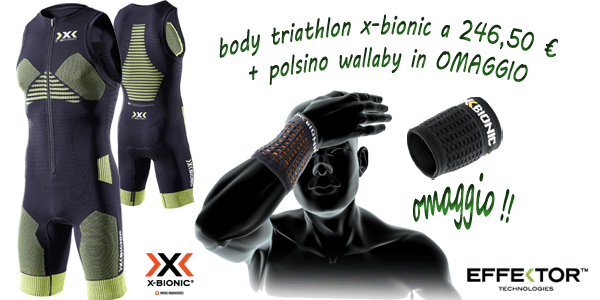 Special promotion MOTUS: with purchase of a triathlon body x-bionic (X-BIONIC POWER TRIATHLON SUIT EFFEKTOR) receive complimentary cuffs X-BIONIC WALLABY. . The Wallabies is the model that we inspired. This animal is often licks forearms, in such a way as to create a cooling effect with the evaporation of saliva. So it cools the blood and, therefore, the whole organism. During your workouts in the summer season, you will be wallaby cuffs useful to wipe your sweat.
Special promotion MOTUS: with purchase of a triathlon body x-bionic (X-BIONIC POWER TRIATHLON SUIT EFFEKTOR) receive complimentary cuffs X-BIONIC WALLABY. . The Wallabies is the model that we inspired. This animal is often licks forearms, in such a way as to create a cooling effect with the evaporation of saliva. So it cools the blood and, therefore, the whole organism. During your workouts in the summer season, you will be wallaby cuffs useful to wipe your sweat.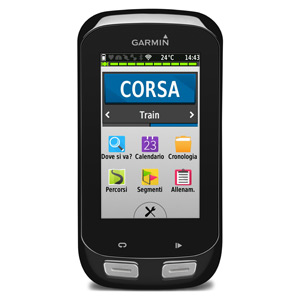 E ' released a new jewel in the House: the new GARMIN cycling computers with Gps EDGE 1000 is ideal for cycling.
E ' released a new jewel in the House: the new GARMIN cycling computers with Gps EDGE 1000 is ideal for cycling.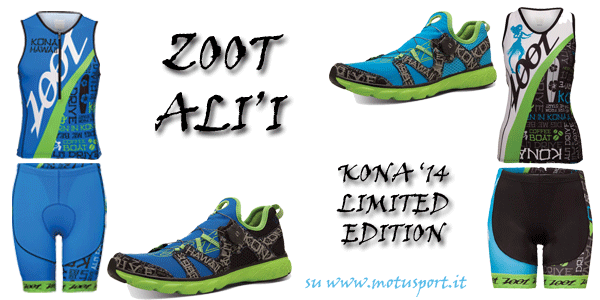 On www.motusport.it there is a new collection ZOOT Ali'i 14, created by the famous brand USA triathlon at the next edition of the Ironman Triathlon World Championship in Kona. Broken full triathlon (short + top), complete games (Jersey + bib) and running shoes the man and awoman versions. Garments made with the same quality that distinguishes the renowned trademark ZOOT, with really attractive colrazioni. For purchases and for details on the collection ZOOT Ali'i 2014
On www.motusport.it there is a new collection ZOOT Ali'i 14, created by the famous brand USA triathlon at the next edition of the Ironman Triathlon World Championship in Kona. Broken full triathlon (short + top), complete games (Jersey + bib) and running shoes the man and awoman versions. Garments made with the same quality that distinguishes the renowned trademark ZOOT, with really attractive colrazioni. For purchases and for details on the collection ZOOT Ali'i 2014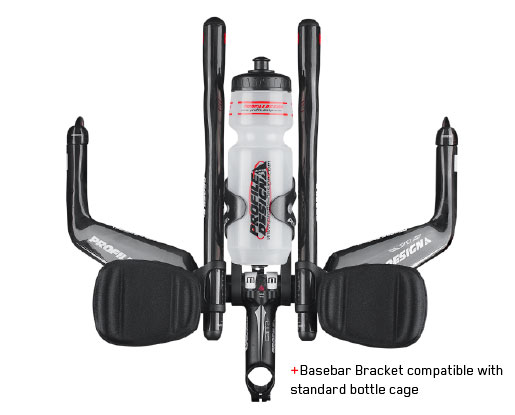 Here's a video that shows how you install the handlebar clamp for canteens triathlon Profile Design. Both traditional bottles and water bottles specifically for triathlon as Aerodrink and Aqualite.
Here's a video that shows how you install the handlebar clamp for canteens triathlon Profile Design. Both traditional bottles and water bottles specifically for triathlon as Aerodrink and Aqualite.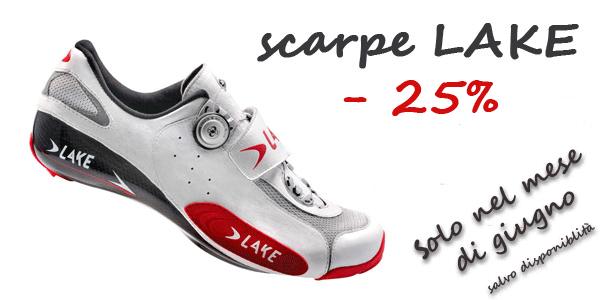 Great promotion of MOTUS on LAKE cycling shoes. 25% discount for purchases of deposits made in June on Lake Road and MTB. You can buy at a very advantageous price shoes of great quality as the Lake CX401 CX402, Lake, Lake MX217 and Lake MX331 The Marathon offer is valid subject to availability of the shoe (model and size). For more details on the offer click here
Great promotion of MOTUS on LAKE cycling shoes. 25% discount for purchases of deposits made in June on Lake Road and MTB. You can buy at a very advantageous price shoes of great quality as the Lake CX401 CX402, Lake, Lake MX217 and Lake MX331 The Marathon offer is valid subject to availability of the shoe (model and size). For more details on the offer click here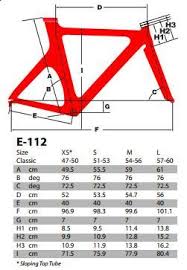 Those who buy a bike or triathlon time trial, often finds it difficult to choose the correct size of the frame as a function of their anthropometric measures. The cyclist's positioning on a trial or triathlon bike differs from what the same cyclist has on a traditional bike geometries. Different is the use that is made of the bike, different is the pace on the bike (speed), different is the driveability, etc etc. ARGON18, Canadian House specialized in time trial and triathlon bikes, with his models E118, E116, E112 and E80, provides useful tips for choosing the size of the frame as a function of seat height. That is, the distance between the saddle and bottom bracket (depending on the rider's leg length). for each of its models/triathlon time trial bike, ARGON18 suggests the size most suitable chassis. It also provides, for each combination seat height and frame size, minimum and maximum measurements of a fundamental parameter for the time trial triathlon bike: the drop saddle-poggiagomiti, which is the vertical difference between the seat and the padding of poggiagomiti. The value of this difference has an important value to determine the comfort and efficiency of the rider's posture. An excessive or too low level would compromise the pedaling efficiency and the ability to maintain an aerodynamic position for a long time.
Those who buy a bike or triathlon time trial, often finds it difficult to choose the correct size of the frame as a function of their anthropometric measures. The cyclist's positioning on a trial or triathlon bike differs from what the same cyclist has on a traditional bike geometries. Different is the use that is made of the bike, different is the pace on the bike (speed), different is the driveability, etc etc. ARGON18, Canadian House specialized in time trial and triathlon bikes, with his models E118, E116, E112 and E80, provides useful tips for choosing the size of the frame as a function of seat height. That is, the distance between the saddle and bottom bracket (depending on the rider's leg length). for each of its models/triathlon time trial bike, ARGON18 suggests the size most suitable chassis. It also provides, for each combination seat height and frame size, minimum and maximum measurements of a fundamental parameter for the time trial triathlon bike: the drop saddle-poggiagomiti, which is the vertical difference between the seat and the padding of poggiagomiti. The value of this difference has an important value to determine the comfort and efficiency of the rider's posture. An excessive or too low level would compromise the pedaling efficiency and the ability to maintain an aerodynamic position for a long time.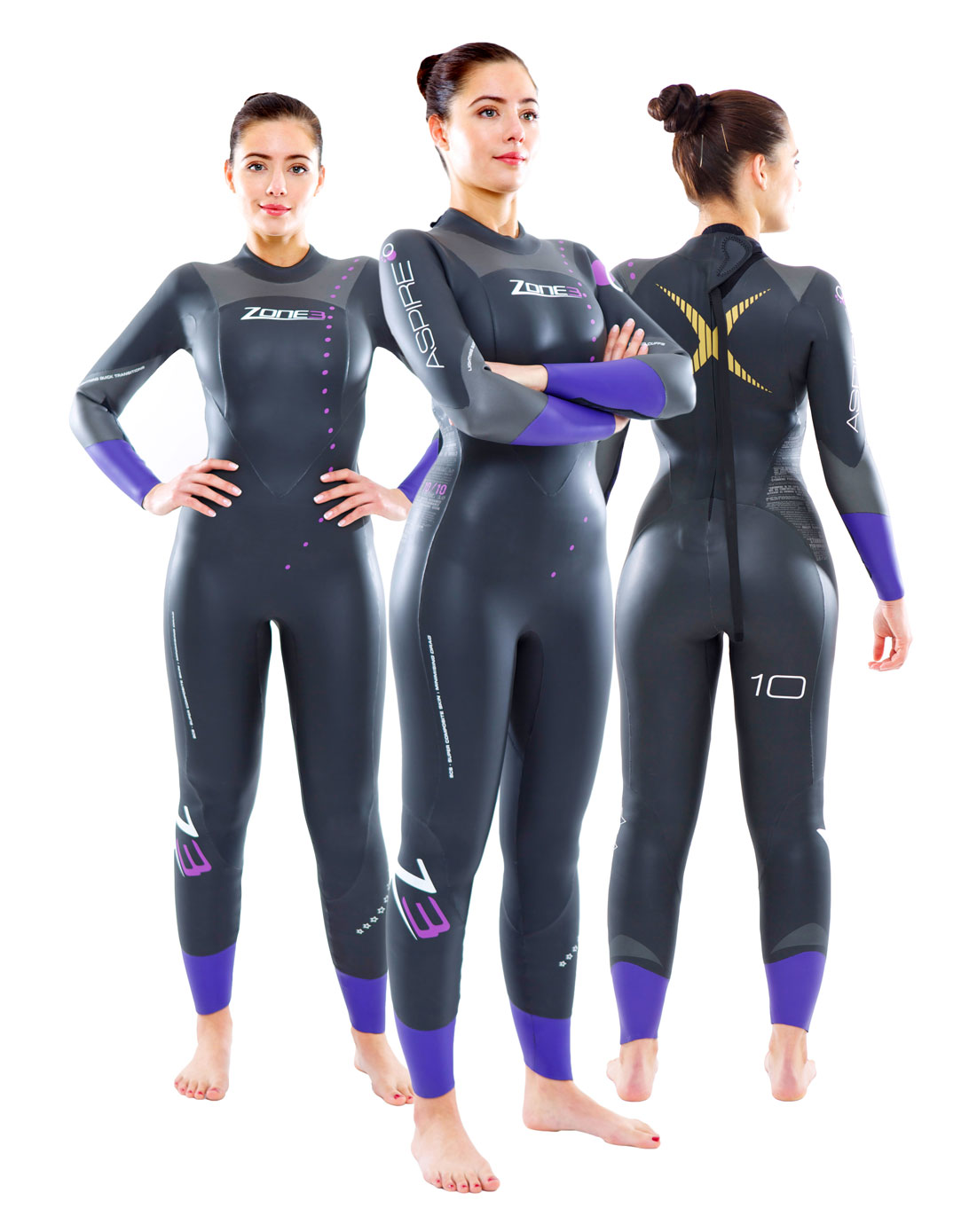 Here's a video of 3 Areas that demonstrates the correct way to put on a wetsuit triathlon. It is common and frequent watch trisathleti that have difficulty indoissare a pack: fatigue, much time and risk of damage to the external surface of the neoprene. We learn from this video what is the best way to caklzare a triathlon wetsuit easily, safely and quickly
Here's a video of 3 Areas that demonstrates the correct way to put on a wetsuit triathlon. It is common and frequent watch trisathleti that have difficulty indoissare a pack: fatigue, much time and risk of damage to the external surface of the neoprene. We learn from this video what is the best way to caklzare a triathlon wetsuit easily, safely and quickly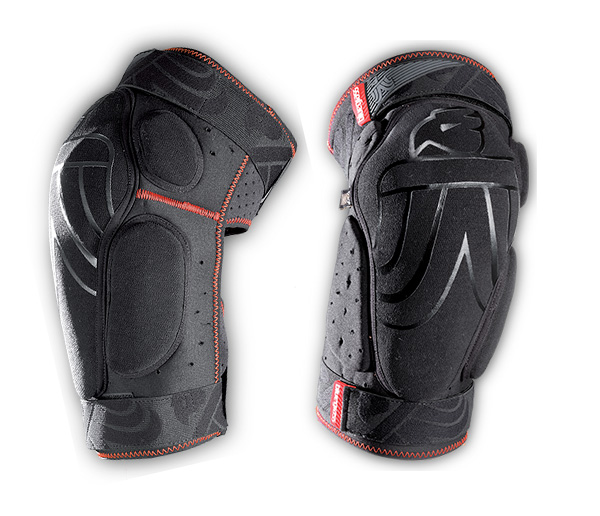 Bluegrass presented already in 2011 a full range of protections that flanks the helmet line. Knee pads and back protector/bust are available in two different models. The Grizzly and the back knee/elbow pads Bobcat are made with hard material protection. Grizzly models d3o and Bobcat d3o, that represent the top of the range, are manufactured with the innovative d3o material. The d3o molecules remain free and furniture among them both in static phase for low-speed impacts. In this way you can ensure maximum lightness and an excellent fit. At the time of a high-speed impact the molecules of the material is compacted them by providing superior protection to that of a traditional hard material. The use of this material has enabled the creation of very comfortable protectors and read that, in the event of impact, provide a superior shock-dissipating to the traditional protections with rigid materials. The back protector Grizzly d3o literally "doesn't feel" on him. Mobility in driving is extreme, as in the case of d3o Bobcat Kneepads. The most skeptical certainly turn up their nose in front of protections that are feel so soft, the well-established laboratory data (see d3o site for more info) and numerous field trials allow however to say that the performance of these new materials are truly exceptional. On the other hand many Cup rider now use knee pads that adopt such solutions. The fit of these new products Bluegrass is cured in every detail. No seams "painful" for the skin or put in the wrong place. Finishes and colours very appealing. In essence a product absolutely recommend. For more information visit Bluegrass. You can buy products online Uprotezioni oper Bluegrass MTB, XC, Freeride, DH) on www.motusport.it, click here
Bluegrass presented already in 2011 a full range of protections that flanks the helmet line. Knee pads and back protector/bust are available in two different models. The Grizzly and the back knee/elbow pads Bobcat are made with hard material protection. Grizzly models d3o and Bobcat d3o, that represent the top of the range, are manufactured with the innovative d3o material. The d3o molecules remain free and furniture among them both in static phase for low-speed impacts. In this way you can ensure maximum lightness and an excellent fit. At the time of a high-speed impact the molecules of the material is compacted them by providing superior protection to that of a traditional hard material. The use of this material has enabled the creation of very comfortable protectors and read that, in the event of impact, provide a superior shock-dissipating to the traditional protections with rigid materials. The back protector Grizzly d3o literally "doesn't feel" on him. Mobility in driving is extreme, as in the case of d3o Bobcat Kneepads. The most skeptical certainly turn up their nose in front of protections that are feel so soft, the well-established laboratory data (see d3o site for more info) and numerous field trials allow however to say that the performance of these new materials are truly exceptional. On the other hand many Cup rider now use knee pads that adopt such solutions. The fit of these new products Bluegrass is cured in every detail. No seams "painful" for the skin or put in the wrong place. Finishes and colours very appealing. In essence a product absolutely recommend. For more information visit Bluegrass. You can buy products online Uprotezioni oper Bluegrass MTB, XC, Freeride, DH) on www.motusport.it, click here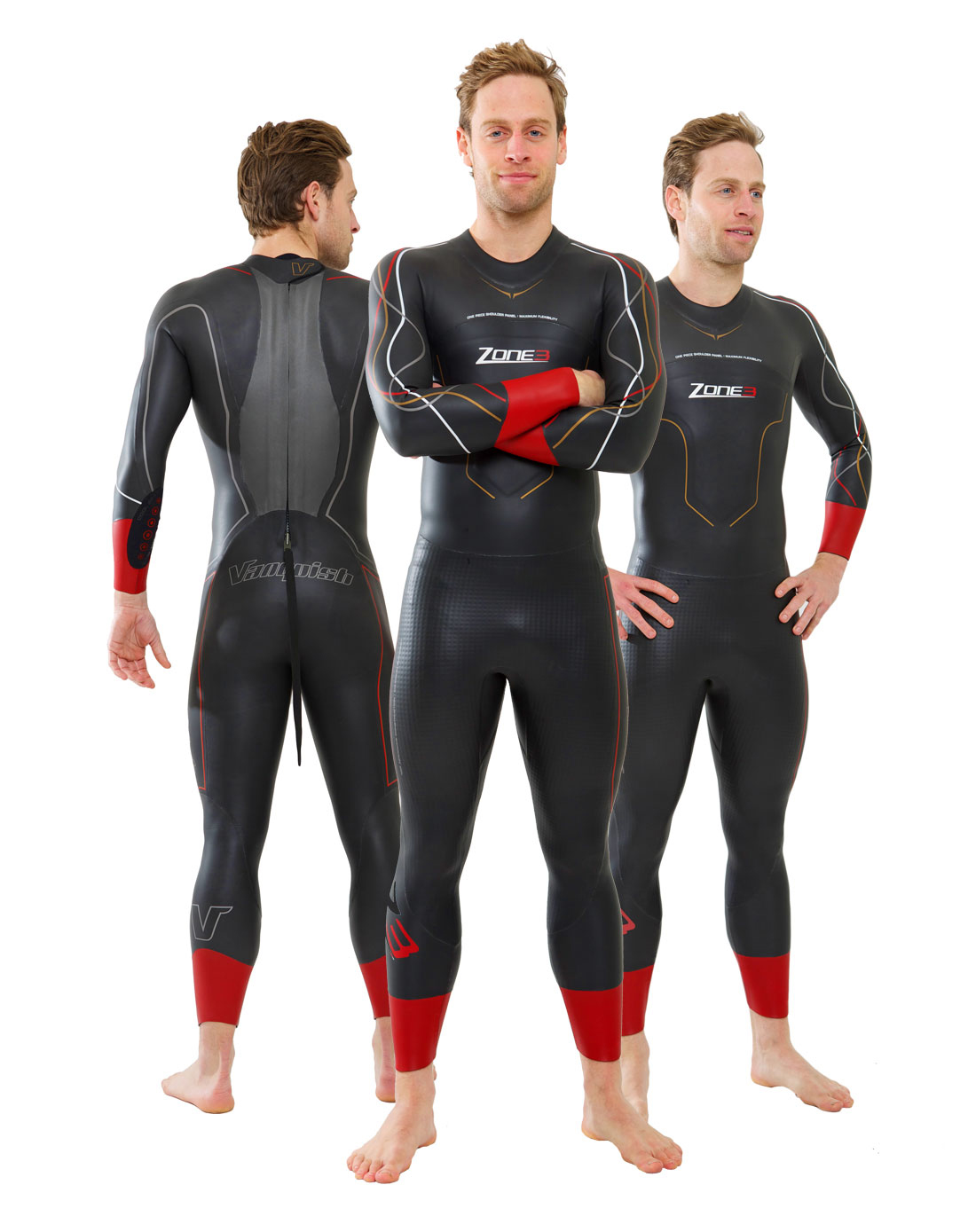 Here's a video from Zone3 transition faster than ever. A video that demonstrates how to take off a wetsuit in seconds just Zone3 emerged from water. Seeing is believing!!
Here's a video from Zone3 transition faster than ever. A video that demonstrates how to take off a wetsuit in seconds just Zone3 emerged from water. Seeing is believing!!Innovation is always ready to turn, when you least expect it. So, just when we were getting used to hearing about Natural Running and minimalism in running shoes, we are now to deal with the counter-revolution of ultra cushioned running.
 This preamble I need to think a little bit on the last born House Brooks shoe. Unexpected, unexpected. Definitely a real revolution. It's called Transcend and, regardless of what that will be its success and its evolution, certainly opens a new era in running shoes. The tendency of all companies towards the "natural motion" in this model is combined with the search for maximum protection. In summary it is a neutral shoe that can stabilize the support thanks to a kind of life preserver, which the Americans call the roll-bar, located along the whole perimeter of the shoe and that continues on the outer shell, in the heel.
This preamble I need to think a little bit on the last born House Brooks shoe. Unexpected, unexpected. Definitely a real revolution. It's called Transcend and, regardless of what that will be its success and its evolution, certainly opens a new era in running shoes. The tendency of all companies towards the "natural motion" in this model is combined with the search for maximum protection. In summary it is a neutral shoe that can stabilize the support thanks to a kind of life preserver, which the Americans call the roll-bar, located along the whole perimeter of the shoe and that continues on the outer shell, in the heel.
 This system, instead of the classic anti-inserts, pronation is not invasive because it works only if and when you exit from the axis support limiting both ideal hyper-pronation and Supination.
This system, instead of the classic anti-inserts, pronation is not invasive because it works only if and when you exit from the axis support limiting both ideal hyper-pronation and Supination.
Very interesting is also the size of the midsole. The bead has width and height classic (24 mm) but is a little more rounded to make more natural the first phase of the drum roll. The medial area is much wider than normal and fully endorses the terrain favoring cushioning and stability while the forefoot is 4 mm higher than the standard (then 16 mm).
 Thanks to this increased height there is a better distribution of weight drain while turning (less concentrated in the heel). Changes noting midfoot and onwards are much more marked in the forefoot area where 4 mm in addition should give a feeling of softness very accentuated.
Thanks to this increased height there is a better distribution of weight drain while turning (less concentrated in the heel). Changes noting midfoot and onwards are much more marked in the forefoot area where 4 mm in addition should give a feeling of softness very accentuated.
The midsole is made from a new compound, called Super DNA, which merged the BioMogo base compound and the improved version of DNA. Brooks claims to have improved by 25% shock-absorbing capacity. The new mixes, more flexible than the standard ones, and an advanced study of bending lines allow you to maintain optimal sensitivity under the forefoot in spite of 4 mm of additional material.
 The shape is unusual, especially if it compares to minimalist shoes of the last period. Of course we could not yet discover it by testing it on the road. We have limited ourselves to tell this shoe according to preliminary indications that Brooks has provided when American preview a few weeks ago.
The shape is unusual, especially if it compares to minimalist shoes of the last period. Of course we could not yet discover it by testing it on the road. We have limited ourselves to tell this shoe according to preliminary indications that Brooks has provided when American preview a few weeks ago.
This model will be available in stores starting in February 2014.
You can buy online from MOTUS by clicking here
(edited by Rosaruio Palazzolo)
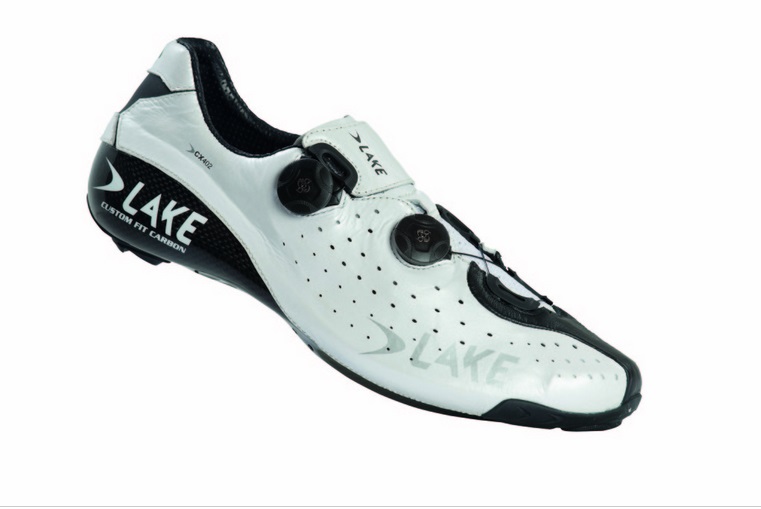 Here's a video demonstrating the correct procedure for thermoform LAKE shoes with sole thermoformable, such as new model CX402 kangaroo leather and BOA closure system doubles. Good vision
Here's a video demonstrating the correct procedure for thermoform LAKE shoes with sole thermoformable, such as new model CX402 kangaroo leather and BOA closure system doubles. Good vision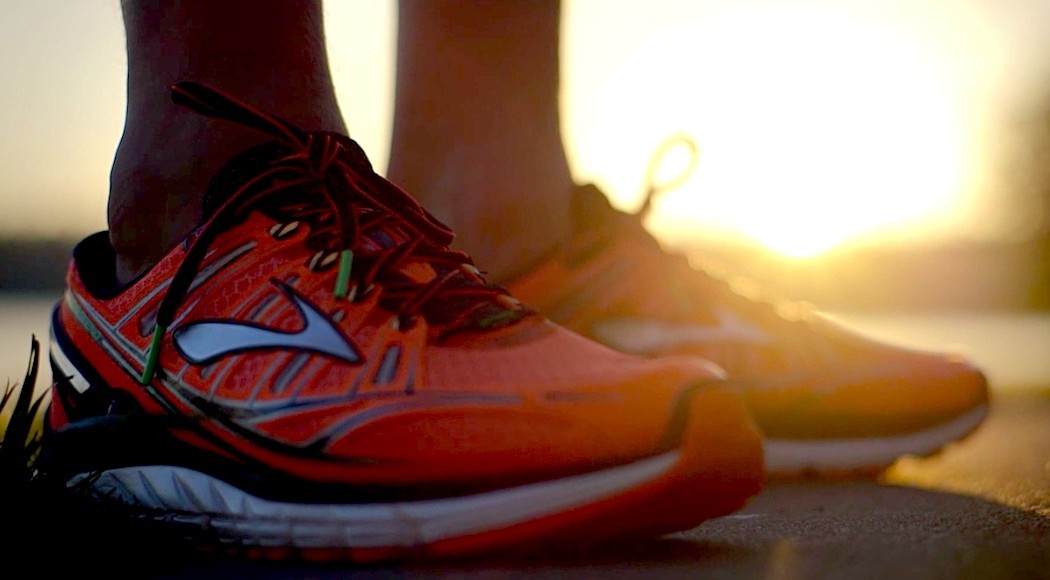 "Nature" is the magic word. In all its variation: natural, natural movement, purity. "Pure" is called the declination of Brooks of nature: a movement of the foot that the shoe does not prevent, and indeed helps and supercharges.
"Nature" is the magic word. In all its variation: natural, natural movement, purity. "Pure" is called the declination of Brooks of nature: a movement of the foot that the shoe does not prevent, and indeed helps and supercharges.Brooks noted that not all runner looking for a natural running experience: often people who come from a traditional shoe – and support – suspension is intimidated by a shoe that lets the foot too free and search anyway the smoothness and responsiveness of a well-structured outsole.
With these assumptions has created It, evolving some patents of successful and highly appreciated by Brooks, as DNA cushioning technology (which now becomes "Super DNA" and cushions with a 25% effectiveness in addition). But not only.
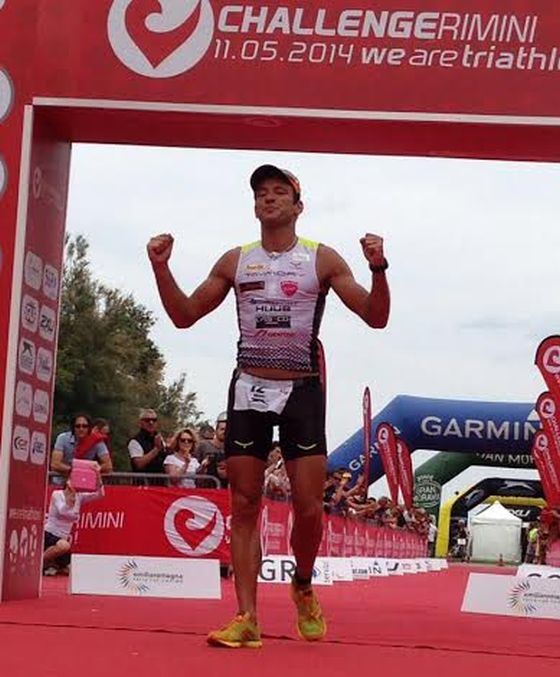 Yesterday was held in Rimini the 2014 Edition of medium circuit Challenge triathlon. Among men strong athlete won the livornese, Domenico Passuello, signed for the Roman society Forhans Team.
Yesterday was held in Rimini the 2014 Edition of medium circuit Challenge triathlon. Among men strong athlete won the livornese, Domenico Passuello, signed for the Roman society Forhans Team.In the men's competition, the Tuscan triathlete came out behind the 1,900 meters after swimming, yet his Achilles heel, more than two minutes away from the leading group.
But he was once again able to show all her talent on two wheels: he managed to push his very special Carrera to the obsessive beats, recovering ground lost first and then, after taking the lead, creating a significant gap between itself and the direct pursuers, thanks to the best part of the day in 90 k.
Only athlete capable of supporting its frequencies in the saddle was Johann Ackermann, who however had to abdicate to the will of the Italian already from the first meters of the 21 k run fraction.
The rider of the Team Forhans in the half marathon has made futile any attempt to comeback, and again to be the number one, ending in 1:14:21, the best split walk: "Finally I got where I wanted to ," said Passuello-at the end of the competition, thanks to all those who believed in me as always I did!".
Behind the winner impressed the Austrian travel Andreas Giglmayr, interpreter of a great comeback that brought him to the silver. The podium was completed by Ritchie NichollsBritish, European champion Ironman 70.3 2013.
One minute from the podium came the second blue, Massimo Cigana: released more than 1 ' behind the water, even Passuello Cigana drove strong bike, second only to the winner, but walking has changed then the return of two foreign triathletes who are denied a chance to medal.
You are picked up two other expected stars of the thicket warband Italian: Daniel Fontana, silver last year, raised the white flag around 25° km cycling fraction; Alessandro Degasperi, third in 2013, he preferred instead to stop in the first beats of half due to physical problems.
Away from the podium in two of the favourites Christmas Eve: Terenzo Bozzone, New Zealand champion of Italian origin, arrived sixth, while the German Nils Frommhold finished tenth.
The women's race was hard-fought in the swim portion and instead saw emerge head positions in the 90 miles of cycling.
Ireland's Eimear Mullan was played by a very well managed, that has allowed to enter T2 firmly at the top of the women's rankings.
Capable of running a ultra high frequencies travel, Mullan has thus brought to the finish alone, leaving the Belgian Tine Deckers to nearly three minutes. Bronze went to German neck Karen Sammler at just over 5 ' by the winner.
At the foot of the podium, the New Zealander Nigel Crawford, then the Team Chili Czech Gabriella Zelinka, followed by Vanessa RawBritish.
Martina Dogana (Team Forhans) is the first of the Italians, in seventh place, and less than 1 minute the Dutch champion Yvonne van Vlerken.
Top ten centered by two players: the ninth post there is the young Giorgia Priarone, rider of TD Rimini, the organising company, while behind him, and before the tenth Age Group, is Michela Menegon of Florence Triathlon.
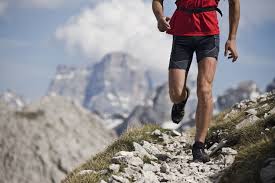 Road racing has certainly increased in recent years, both in feminine and male, but in the course of the years, many racing lovers are seeking new motivations, feelings, interests, changing goals about how to deal with them the race. For this reason, Trail Running is also under development, an eye-catching and accessible discipline, but it has traps due to the routes used. In this article we will see just how to walk from the road race, or how to integrate the road race with the Trail Running. We will see what are the substantial differences and how to take part in Trail manifestations without hurting yourself.
Road racing has certainly increased in recent years, both in feminine and male, but in the course of the years, many racing lovers are seeking new motivations, feelings, interests, changing goals about how to deal with them the race. For this reason, Trail Running is also under development, an eye-catching and accessible discipline, but it has traps due to the routes used. In this article we will see just how to walk from the road race, or how to integrate the road race with the Trail Running. We will see what are the substantial differences and how to take part in Trail manifestations without hurting yourself.
Definition
If you want to define the Trail Running, it is a Resistance race that is practiced in a natural environment and where there can be a regime and self-sufficiency and semiautonomy. The Trail Running is practiced on different types of terrain (mountain, sand, woods, desert) and under different environmental conditions (in summer and in winter). It is a discipline that allows to have a special and special contact with nature and with oneself, moving away from one's own habits and commonplace, and then escaping from the city and its routine, disconnecting the plug from the common world.
Features (Why does one choose Trail Running)?
The amateur approaching the Trail Running is definitely driven by the desire to explore new routes and new places, running in the wild without the stress of the stopwatch, performance itself, but enjoying everything a race in nature presents. The particularity of this discipline as we have seen is that of running on paths immersed in woods, countryside, more or less steep mountains, in close contact with nature, but like all activities taking place in nature, the Trail Running Has difficulty of varying degrees according to the distance and slope differences they present. At this time of the season with the beautiful days of Trail Running races on the national calendar are so many, and you can have fun as never before, descending distances and paths according to your physical condition. But it is crucial that some rules be followed to prepare for a Trail Running event and to take part in the race itself. In general we can state that in order to call a Trail Running race, we must have certain technical and organizational features:
Once we have analyzed the technical and organizational features, we have defined what the racing Running races are, we see how the athletic training changes to participate in a "off-road" race, compared to a classic racing race, what are the athletic, technical and Mental needs to be improved and developed.
Preparation (Athletics, Technique, Mental)
Surely as every race that is respected to get prepared to the best possible, you need a targeted and specific training plan for discipline and distance to travel, and customized to your conditional features. All this in the Trail Running races is not only for athletic training, but also for avoiding problems and risks to your health, just because as we have seen these races take place on paths not just inclined to our daily living and our lifestyle , So the "surprises" can be different.
Athletic Preparation, as regards the conditional aspect, it is necessary to improve the following capacities:
Technical Preparation: In this case we say it is also closely related to the qualities mentioned and developed for athletic training. It is obvious that the climbing and falling paths, support changes and slopes, running on these workout paths allow us to improve some of the support, push and reactivity of the feet, the ability to cushion impact on the slopes, the ability to Run uphill climbing, or get used to walking for long stretches where slopes are excessive, and running becomes impossible and costly.
Mental Preparation: Certainly for those who approach Trial races apart from the distance they need to develop a great mental strength to overcome the fatigue that sometimes becomes excessive, and the body needs to be helped by a careful and strong mind . For this reason, if you are not prepared to face fatigue and make rational decisions in a short time, it is not advisable to deal with these races, the pitfalls are many, especially if you talk about long distances. So it's better to train your mind if you want to tackle Trail Running races.
Clothing and accessories: If in the street racing you need some technical clothing and running shoes, certainly for the Trail Running even more. You will need to buy Trial Running shoes with tread and consistency completely different from running shoes, different clothing, when there may be weather conditions that change over the same race, so it is ideal to dress in layers and thus have clothing suitable. Then it will take a backpack, not too cumbersome, but that it can be functional and comfortable to carry on the shoulder, some water bottle and supplements, and torch-nightclubs and refreshing clothing to be spotted by other athletes.
Food: As far as nutrition is concerned, it is not essential, but more. It is not conceivable for some Trail Running races not to race in the race, to integrate the right according to their own needs, so the goal of preparation is also to learn to feed and integrate. As usual, the tips are the same, that is to use products that are easy to assimilate and give short, medium, and long term energies. So carbohydrates, liquids and solids go well with the needs of the moment and the race. It is important to calculate race needs to be able to plan the right supply and integration.
So let's finish this first part of this article, hoping that many of you enthusiasts can find excitement and energies to dedicate themselves to this beautiful, fascinating and tiring discipline for the body and soul.
Good run!
(By runningzen by Prof. Ignazio Antonacci)
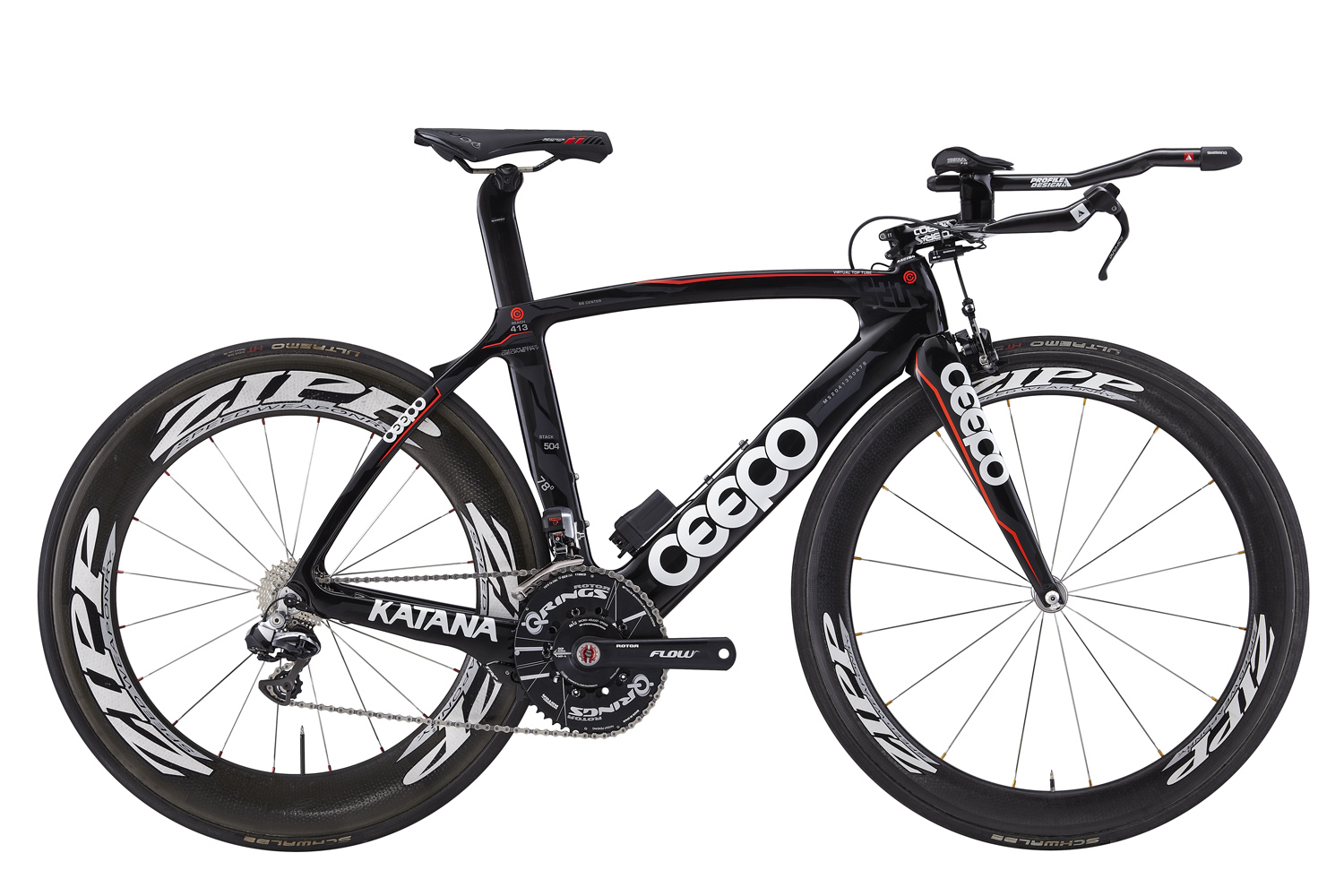 In the early 1990s, triathlete Nobuyuki Joe Tanaka was fed up with his standard road bike and began tinkering. After achieving personal success with his own tri-specific bike, he realised our sport had its own unique demands and Ceepo were born in 2002.
In the early 1990s, triathlete Nobuyuki Joe Tanaka was fed up with his standard road bike and began tinkering. After achieving personal success with his own tri-specific bike, he realised our sport had its own unique demands and Ceepo were born in 2002.
Ceepo are bikes born purely out of triathlon, for triathlon and, with top Kiwi Gina Crawford already having ridden hers onto the podium at Challenge Wanaka this year, they deliver at the top level.

The Katana is Ceepo's number two frame behind the Viper, and while the Viper may have more aerodynamic trickery the Katana looks no slouch. The tube shapes are intentionally simple, with big chunky chainstays to help maximise stiffness and a lowered down tube to enhance aerodynamics. It's targeted at middle-and long-distance racers with the consistent message being that this is a bike designed to help you run better.

The Coal Spin K2 K50 wheelset | is hand built and lightweight (at 1, 580 g), while the 50 mm rim depth is a solid choice for UK races. Retailing at £699, they don't compare to the £ 2,000 pairs we tested last issue but they're no disappointment and are genuinely race ready. The Veloflex Corsa tyres racing show intent, too, and have a reputation for being a feeling set of tubular clinchers. The bulk of the groupset, including front and rear mechs, is SRAM's second-tier mechanical Force in its 10-speed incarnation. But the crankset is Rotor's Flow. The elliptical QRings aren't to everyone's tastes but we've been riding them for a few years and are convinced they give us fresher legs for the run.

The front brake is a standard SRAM Force rear calliper but the TTV is tucked neatly away out of the wind on the chainstays. Profile Aeria cockpit Design is a superb choice that offers a brilliant amount of adjustability and has been ridden to Ironman Worlds glory by Mirinda Carfrae. Up top, the Fizik Arione Tri saddle 2 should contribute to a plush ride.
 Sometimes, right from the first pedal strokes, you ride a bike and it just feels right. The Katana falls into this category. Some of this comes down to the adjustability of the Profile Design cockpit, but the bike's superbly accommodating geometry undoubtedly plays a huge part. You feel aero and powerful but also comfortable. You can immediately settle into long-course mode, confident that you could ride strong for hours.
Sometimes, right from the first pedal strokes, you ride a bike and it just feels right. The Katana falls into this category. Some of this comes down to the adjustability of the Profile Design cockpit, but the bike's superbly accommodating geometry undoubtedly plays a huge part. You feel aero and powerful but also comfortable. You can immediately settle into long-course mode, confident that you could ride strong for hours.
The Katana is no sluggish sofa on wheels, though, and suffers collarbo from none of the response issues that sometimes dog tri-specific bikes. It's nimble through bends with no unexpected dives or lurches and pleasingly accelerates on exit. On long flats it hammers along wonderfully and, even when battling broken winter roads, feels smooth and reassuringly stable.
The Spin wheels are impeccably well-behaved in crosswinds, allowing you to totally relax, but they still improve your straight-line speed. Hit a slight rise and whether you choose an aggressive or conservative approach the Katana responds accordingly. On longer climbs, the low weight and stiffness pay dividends.
The SRAM Force front mech has no issues with the QRings and shifting at the rear is crisp, even under load. Heading downhill, the stability on the aerobars allows you to stay low for longer and, when you do rise to slow for a bend, the braking surfaces on the wheels Spin scrub speed well. It's not a white-knuckle thrill-fest but it's certainly confidence-inspiring. Finally, once you've dismounted, the Katana seems to have some elixir of youth in its make-up and leaves you noticeably fresh and ready for the run.
Long-course comfort but with with a pleasing sporty side.
Solid choices where it counts in the frame, cockpit and wheelset |.
Fully race ready but you really want to top-tier groupset at this price.
One of the comfiest tri-specific bikes we've ridden
THE RACE IN THE TRIATHLON HOW TO ALLEN

The Race in the Triathlon has different "dry racing" characteristics, in the Triathlon races it never runs off, the previous fractions of the Swimming and Cycling, together with the Transitions (T1-T2) predicted, condition the final fraction of the Race ! All these technical / physiological and organizational aspects also affect the technical and athletic approach throughout the preparation for the development of the Corsa fraction. The differences between the "Running Race" (for the Runner) and the "Triathlon Race Race" (for the Triathlete) are different:
These are just some of the aspects that can affect and differentiate race management in the Triathlon, compared with the dry race. To limit these conditions to the maximum, as always it is advisable to train as much as possible and appropriately during athletic training, by evaluating all these variables.
TECHNICAL AND ATHLETIC ASPECTS TO IMPROVE
TRAINING SPECIFICALLY FOR THE RACE
All the aforementioned aspects need to be improved over the months of athletic training, in order to do this, use different means and combinations of training. In principle you can sum up:
The combination of these training means will improve the race fraction in Triathlon races. Before you see specifically the ideal training methodology to propose these technical sessions, let's analyze the features of the Race!
Race Definition: Race can be defined as a succession of steps where alternating phases of flight are repeated regularly. In this flight and flight alternation, there is a time when, when the foot touches the ground, it develops kinetic energy and potential, which energies reach the minimum yield. At this stage there is accumulating elastic energies that are returned in the next push phase!
Race phases:
Step / Falcata
Frequency / Width
In order to improve the performance in terms of rhythm of travel and lower energy consumption especially in resistance races, it is advisable during the preparation to include racing technique seats where all the technical aspects of the Race are taken into account. Then by analyzing the technical aspects mentioned above, we can say that the technical exercises must cover:
In addition to these exercises that are important to improve some technical aspects of "dry" racing, it's crucial to train the "race in the triathlon" with specific exercises!
TRAINING TO IMPROVE THE RACE FRAME
Objective: Increase your mileage Race | 1 ^ sitting | 2nd session | 3 ^ session |
Race IronMan (42km) | Along the hills 30km | Along 34km | Along 38km |
Race IronMan 70.3 (21km) | Along Hills 22km | Medium 15 -16 km | Medium 16-18 km |
Olympic (10km) | Long Hill 15km | Short Fast 8 - 10 km | Race 10 - 12 km |
Duathlon long (20km) | Along the Hillside 21km | Medium 15 - 16km | Medium 16-17 |
Duathlon Classico (10km) | Long Hill 15km | Short Fast 8-10km | Race 10km |
Duathlon Corto (7km) | Medium Hill 15km | Short Quick 6-8km | Race 8- 10km |
Objective: Increase your mileage cycling | 1 ^ sitting | 2nd session | 3 ^ session |
Race IronMan (180km) | Hillside 140km | Hillland 160 km | Hillsides 200 km |
Race IronMan 70.3 (90km) | 90 km Colline Hill | Hillside Hill 110 km | Hill Hill 130 km |
Olympic (40km) | Hillland 60km | Hills 80 km | Hillside 100 km |
Duathlon long (80km) | 90 km Colline Hill | Hillside 100 km | Hillside Hill 120 km |
Duathlon Classico (40km) | Hilly Hill 50km | Hill Hill 70 km | Hillside 90 km |
Duathlon Corto (30km) | Hillland 40km | Hillland 60 km | Hill Hill80 km |
Objective: Combined specific for neuro-muscular adaptations | 1 ^ sitting | 2nd session | 3 ^ session |
Race IronMan (180km) | 100km of Cycling 25km Race | 50km of Cycling 10 km of Corsa | 150km of Cycling 35 km of Corsa |
Race IronMan 70.3 (90km) | 70km of Cycling 12km Race | 3x 25km of Cycling 5km of Corsa | 90km of Cycling 16 km of Corsa |
Olympic (40km) | 50km of Cycling 5km Race | 3x 20km of Cycling 2/3 km of Race | 40km of Cycling 8 km of Corsa |
Duathlon long (80km) | 2 x 35km of Cycling 5 km Race | 80 km of cycling 12 km of Corsa | 3x 30km of Cycling 8 km of Corsa |
Duathlon Classico (40km) | 3 x 25km of Cycling 3 km Running | 50km of Cycling 6 km of Corsa | 3x 20km of Cycling 4 km of Corsa |
Duathlon Corto (30km) | 40km of Cycling 7 km Running | 3x20 km of Cycling 3 km of Corsa | 50km of Cycling 8 km of Corsa |
As you can see the possible combinations of workouts to improve the Race Fraction in the Triathlon are different, you can train by inserting Long and Medium Racing Seats to improve the Race Resistance, Improve Resistance and Specific Force for the Bike with Horseshoe Seats beyond the distance provided by the race. Additionally, you can improve the passage between Cycling and Racing by adding Seats of Continuous or Fractioned Combined with a mileage that corresponds approximately to 2/3 of the total mileage of the scheduled race! As always every session and every training proposal must be adapted to its technical and physical characteristics!
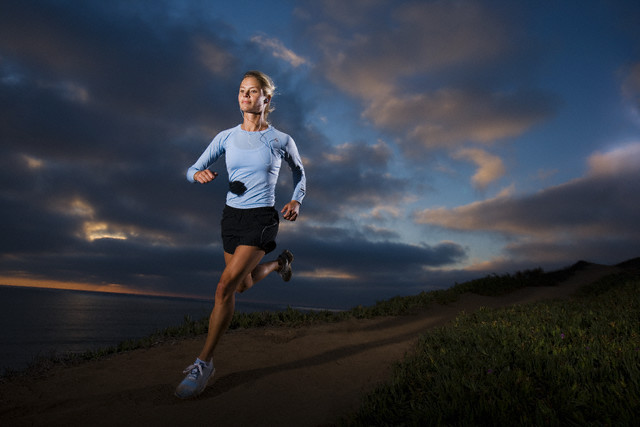 The Triathlon on the Olympic-remote and travel 10 km-concern all the efficiency of speed (Paul Larkins writes).For us, triathletes, acceleration sprints can be often seen as a bit of a waste of time, but if addressed properly can provide a huge boost to your weekly schedule.
The Triathlon on the Olympic-remote and travel 10 km-concern all the efficiency of speed (Paul Larkins writes).For us, triathletes, acceleration sprints can be often seen as a bit of a waste of time, but if addressed properly can provide a huge boost to your weekly schedule.The fraction of cycling in the triathlon
 Cycling is the fraction that has seen the biggest changes in the Olympic distance. The distance of forty kilometers is perhaps the only constant that has remained unchanged in a series of changes that over the years has involved regulation, mechanics, modeling and training theory. The liberalization of the wake was the legitimation of a fact: the leveling of performance among the strongest triathletes in the world did not allow to detect significant breaks at the end of the swim with the consequent crowding of athletes who poured out of the first gear zone Without the possibility of cycling independently of other competitors. Over the last few years, some of the World Cup races have happened to attend breakaways where fifty minutes were less than thirty seconds from the best. Therefore, the cycling performance was completely changed: while the bicycle was forbidden, each competitor had to travel alone in the entire fraction, today it is only forced to do so by those who remain irremediably cut off from the group leading the race and those pursuing it in the hope To fill the accumulated detachment. If in the past the lonely cycling effort was a crucial moment in performance, it is today the worst situation in which every triathlete may be. The preparation has also changed, no longer focused on the need to support a chronometer test, but aimed at a competition full of technical, tactical and metabolic nuances; The morphological structure of the triathlete has changed: the passionate with a large muscular structure has undergone an atypical athlete, who knows how to combine fast strength and strength in a light and elastic structure. The revolution in cycling has actually changed the face of the entire Olympic race. To avoid being isolated on a bicycle, it is crucial to swim very strongly, while it is equally important to run faster and faster, since it is almost always the race that determines the ranking positions. This does not mean that the first two fractions are devoid of agonistic significance. It is to be said that only athletes capable of holding the rhythms of the first for the two previous fractions will be able to win the race, provided they arrive in the second transition zone still have sufficient energy reserves and sufficient freshness.
Cycling is the fraction that has seen the biggest changes in the Olympic distance. The distance of forty kilometers is perhaps the only constant that has remained unchanged in a series of changes that over the years has involved regulation, mechanics, modeling and training theory. The liberalization of the wake was the legitimation of a fact: the leveling of performance among the strongest triathletes in the world did not allow to detect significant breaks at the end of the swim with the consequent crowding of athletes who poured out of the first gear zone Without the possibility of cycling independently of other competitors. Over the last few years, some of the World Cup races have happened to attend breakaways where fifty minutes were less than thirty seconds from the best. Therefore, the cycling performance was completely changed: while the bicycle was forbidden, each competitor had to travel alone in the entire fraction, today it is only forced to do so by those who remain irremediably cut off from the group leading the race and those pursuing it in the hope To fill the accumulated detachment. If in the past the lonely cycling effort was a crucial moment in performance, it is today the worst situation in which every triathlete may be. The preparation has also changed, no longer focused on the need to support a chronometer test, but aimed at a competition full of technical, tactical and metabolic nuances; The morphological structure of the triathlete has changed: the passionate with a large muscular structure has undergone an atypical athlete, who knows how to combine fast strength and strength in a light and elastic structure. The revolution in cycling has actually changed the face of the entire Olympic race. To avoid being isolated on a bicycle, it is crucial to swim very strongly, while it is equally important to run faster and faster, since it is almost always the race that determines the ranking positions. This does not mean that the first two fractions are devoid of agonistic significance. It is to be said that only athletes capable of holding the rhythms of the first for the two previous fractions will be able to win the race, provided they arrive in the second transition zone still have sufficient energy reserves and sufficient freshness.
The medium: LA BICICLETTA
The bicycle is a machine composed of several components that we can group into four groups according to their function:
When selecting a bicycle, consider the right proportions between the chassis and other elements of the vehicle and the anthropometric measurements of the student. These proportions depend essentially on the vertical and the horizontal measurements. The vertical measurement consists of three elements: the length of the pedal (from the center of the pedal axis to the center of the center movement); The length of the pier tube (from the center of the center movement to the center of the horizontal tube diameter); The length of the boat and saddle (from the center of the horizontal pipe to the point of contact on the saddle). The horizontal measurement consists of two elements: the length of the horizontal tube (from the center of the tube to the center of the tube); The length of the pipe. Today there are precise and computerized systems to determine the measurements appropriate to the anthropometric characteristics of each individual. However, the use of the road bike can be alternated in some periods of preparation from the use of MTB. The most "important" measure in this jib is the height of the saddle. The most practical method to settle it is to pedal backward the student sitting with the heels on the pedals: the appropriate height should correspond to the one in which the student's leg is tensed with the passage of the pedal in line with the Tube tube. To determine the horizontal dimension, the bust of the student, in the position of maximum engagement, is flexed correctly forward, avoiding too short or long positions that would accentuate paramorphic attitudes.
MEANS FOR THE ACQUISITION OF PEDALATA TECHNIQUE
The cycling technical skills represent the individual and cycling group basics. The mastery of these abilities allows the cyclist and the triathlete to be able to master his or her own mechanical means at all times and to be able to derive maximum performance from their own efforts. Their learning can begin with the use of MTB and then be transferred and adapted to the needs and potential of the road bike.
1.a Means for the acquisition of primary technical skills:
The exercises to be carried out, are aimed at the learning and subsequent improvement of primary technical skills. Some are quite simple and, of course, they must be made for the first, others more complex because they require a certain level of driving safety and mastery of the medium. The exercises can then be placed in any training session, in the form of simple exercise to be performed, inserted in paths, in groups. They can also be part of sessions aimed at learning transitional techniques or combined training. As the technique improves, increase the coefficient of difficulty of each exercise by placing it in more challenging coordination conditions.
The exercises proposed are aimed at acquiring the following skills: (pedaling / straightening / braking / curving / braking and curving / balancing)
BUY PEDALATA TECHNIQUE
The cyclic gesture of the pedal is a very important technical element and the economic execution and deconstruction of such action must be among the very first goals to be achieved. At the top dead point (see picture below), with the foot in the flexion position, the thrust phase is initially driven primarily by the femoral quadriceps and, further to the lower dead point, involves the muscles of the calf more. In the traction stage, from the lower dead point to the upper one, the foot will progressively stretch before lowering the heel rapidly to the top dead spot to restart the thrust phase. The traction phase forces the flexor muscles of the thigh. However, it is not certain that a "pull" upward action of the pedal is really economical for the performance of the While it is certainly beneficial to learn, at this stage, the ability to deconstruct the muscles and significantly decrease the foot pressure on the pedal. The feel that the runner must try is that of the round pedal with a fluid, continuous and non-fragmented gesture. The repetition of the gesture leads to the progressive automation of the pedal gesture and the acquisition of a technique in which muscle interventions become more and more economically selective. Exercises at different pedaling frequencies and focus on agility and frequency at the expense of excessive use of force allow students to acquire good technique and great sensitivity, especially when sessions last for several tens of minutes. The use of fixed -bicycle tires aims to improve these coordination aspects in less time than normal.

Figure 1: (1 large gluteus, 2 femoral ridge, 3 vast medium, 4 wide side, 5 tibial front, 6 gastrocnemio, 7 femoral biceps, 8 semimembranous)
The pedal can be represented by a division into 8 main points in which different forces act. In short, we have:
Figure 2: (1 thrust, 2 thrust / pressure, 3 pressure, 4 pressure pull, 5 shooting, 6 shooting / lifting, 7 lifting, 8 lifting push)
The optimum from a physical point of view reaches 65% (arrow A)
PROGRESS% IST
Among the exercises aimed at improving the pedaling technique we can remember: the fixed ratio, behind the motor and the high frequency pedal sections or with pedal variation . The fixed ratio is a mechanical arrangement that does not allow the rider to stop the pedal and force him to perform a cheaper and decontracted action and is extremely useful in improving the ability to improve at high and very high pedaling rates.
The workout behind the bike or behind the car makes it possible to use the friction decrease with the air that comes from it, to pedal in high frequency pedaling decontraction. Training sessions with pedal pace variations make for a good technical exercise. High-speed (110 / 125rpm) trails with agile ratios, exercise coordination skills, and are designed to make pedaling more economical and cost-effective.
Getting the right leadership: Conducting a bicycle along a straight line is not a skill to take for granted at any age, although there is often a belief among children and young people to know how to do it properly. In some cases then simply insert a small variant (eg rotate the head) to bring down control of the medium. The problem is complicated by the right to stand straight. Knowing how to pedal on foot (off-road) involves a good combination of the action of the legs and arms. The unbalancing caused by the push of the legs must be compensated by the action of the arms that will tilt the bicycle in an oscillatory movement which, with the improvement of the technique, will tend to be minimal. If the shoulders remain locked, the basin will oscillate.
1. In a slight downhill, head right while sitting and giving some thrust with the feet that remain flat to the ground;
2. Head straight while sitting and pedaling for a distance of 100/150 meters in a straight line, possibly striving to tap a line drawn to the ground;
3. Straighten between two rows of skittles or cones that converge more and more into funnels until they leave a small space for the passage;
4. The two previous exercises held on pedals instead of sitting;
5. Head straight on a line in constant acceleration from sitting and then standing on the pedals;
6. Head straight on a line by turning your head to the right and left: sitting, standing, and accelerating;
7. Head right into a tightness marked with the jumps of the high jump that forces the performer also to control the shoulders;
8. Direct right on a pivot axis (swing)
Acquiring the ability to curb Know how to curb gives the beginner confidence and confidence and will help the learning process.
9. Braking with both brakes after a stretch of acceleration;
10. Braking using only the front or only rear brake at reduced speed;
11. Braking starting with the front brake and adding the braking of the rear brake;
12. Braking by measuring the intensity of the two brakes;
13. Brake by deliberately dismounting the rear wheel;
Getting the bending ability : It's good to straighten out that bending means tilting the bicycle to counteract the centrifugal force that tends to push the rider outward and that this strength depends on the speed and radius of the curve from face up to. It is also important to know that the internal pedal inside the curve is kept high and the weight of the body unbalanced on the outer leg.
14. Slalom or gymnastics: the slalom between cones or pins or kinesis at different distances is a very important exercise for learning the skills of riding and balance before even that of bending. Moving or approaching landmarks allows you to acquire specific adaptations at different speeds. For the organizational and executive simplicity of this exercise it is easy to adapt to playful situations, stakes or games that can involve even the greatest.
15. The giant slalom: with the cones, doors are built that the exeiders must cross; These doors may be more or less inclined and of different width. As the previous exercise can be used in several ways and also exploited to improve parallel skills.
16. Eight: You are required to follow an eight-way tour around two spins at varying distances.
17. The daisy: with four bowls at the top of a square and one in the center, it is necessary to turn around the outdoor skittles passing from the center every time
Obtaining the ability to curb and bend: Getting the right braking technique before the curve involves the awareness that the speed must be reduced before the curve and that this operation begins in a straight line especially with the front brake and continues, Curve entry.
18. The U-inversion: using cones or skaters, you can trace two rounds around which you have to curve coming from the straight and after having properly braked, turning in either direction or making a path to eight.
19. The roundabout: sketch two concentric semicircles with the bowls to create a semicircular lane that the students have to face after braking. Execution of the exercise with different amplitudes allows the testing of different bending and inclination speeds of the bicycle;
20. The vortex: the arrangement of three or four parallel ports forces the student to a series of radii curves more or less wide. Exercise can be tightened or enlarged in both directions.
Improve your bike balance
21. Passage under the stern: With two slits and a fairly low post pocket, the student asks the student to lower the torso in order to go below. By lowering the height of the stool, the pupil will have to think differently so as not to bump with his back: at the beginning he will only bend his torso forward, then retract the pelvis and rest his abdomen on the saddle and finally unbalanced laterally. In this exercise, it is appropriate to let the students have the opportunity to invent personal solutions to address the problem, and in the future, solutions that did not spontaneously occur.
22. Slalom in precarious equilibrium: the slalom is performed by passing the front wheel on one side and the rear one on the other side of the bow. Exercise can be performed by sitting or standing on the pedals as long as you use low bowls.
23. Skating slalom under the pedal: the rear wheel passes from the opposite side of the front wheel. In practice, the two wheels travel through a different gymnast around bowls.
24. The eight in precarious equilibrium: it requires the student to follow an eight-way course by turning around two spins or two circles close to the point where they have to run the exercise at very low speeds or almost to stand.
25. The surplace: represents static equilibrium exercise par excellence and is crucial to acquiring perfect control of the medium.
1.b means for acquiring secondary technical skills
The acquisition of secondary technical skills represents the second step in the formation of the cyclist and is aimed at intelligent use of the bicycle. They are divided into manual skills, of which the use of the relationship is the most important, and jumps that provide the cyclist with a safety tool in the face of unpredictable obstacles (holes, masts, rails, etc.). Below are a list of exercises that can, as in the case of primary skills, be completed and integrated by the experience and fantasy of the technicians. The exercises proposed are aimed at acquiring the following skills:
1.c means for acquiring technical skills in a group
The process of learning technical skills in a group requires a good level of mastery of individual technical skills, although the simplest tutorials targeted at this goal are offered to children and young people since the first lessons as they represent the general criteria for moving in nell 'Environment in relation to others.
The exercises proposed are aimed at acquiring the following skills:
Being wheeled is the indispensable prerequisite on which to build other group abilities. This skill is of fundamental importance as it allows the runner to take advantage of the wake of others to reduce friction with the air. The didactic progress of wheeling must take into account the different needs of learning to stay close to those who precede and avoiding falls. Subjects must already possess a discreet mastery of the medium. The main rules to follow are clearly explained since the very first exercises:
- proceed steadily;
- to have as the benchmark the companion's seat that precedes and not its wheel;
- do not rest abruptly;
- Do not turn around and do not look at the change;
- do not stand up abruptly on the pedals;
- decelerate only after moving to change;
- Report any obstacles to the companion that follows.
The change should preferably be done to the right to prevent the shifting friend moving too far to the center of the road. From the single row, she passes to the pairs of pairs that the student learns to have comrades alongside both in front and behind. This skill needs to be prepared with couples in safe environments: pedaling to the elbow, giving the hand, placing his hand on the partner's shoulder, passing the bottle, and so on. The double row consists of two parallel files one of which is active and the other passive. The leader of the active row moves from the other side when his bicycle has completely exceeded that of the other leader. The runners proceed all with their hands below and possibly with the same ratio. Choosing the direction of rotation depends on the direction of the wind and predicts that the active row will always be down. The effectiveness of this exercise depends on the compactness of the group. The fan is the group's ability to face strong side winds, it is recommended for boys who already have good group skills and, for the required roadwork, can only be performed in very special situations. The escape attempt and the pursuit presuppose possession of the following abilities: kick, counterattack and elasticize. The shot is done standing with your hands underneath and, to run it in counterattack, must be made after leaving a few feet of advantage to the runner ahead to surpass it at a much higher speed and moving from the other side of the road in order to Surprise her and not let her take the wheel. The elasticity consists in abandoning the wheel of those who precede it by forcing the runner who follows to overtake us and snap to resume the group.
In conclusion, it is possible to say that every activity that is practiced, practiced, practiced is the only way to improve, to have greater safety with the medium (the bicycle), to have the best chance to exploit its physical potential by consuming less energy possible. So you need to learn to ride on the bike and to make the best use of the pedal technique, we can put these exercises during the training session, especially during the heating and the session's deflation, to leave room for all Conditional appearance in the central part of the training session! Try to improve!
Good fun
(Source: FITRI Instructor Course)
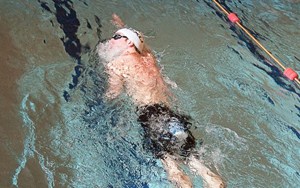 Choose whether your arms to do most of the work in water to save his legs for knowingly bike and race that have yet to come?Alan Rapley, swim the British Triathlon Federation consultant, explains why it is better to focus on the efficiency of gambata etc..
Choose whether your arms to do most of the work in water to save his legs for knowingly bike and race that have yet to come?Alan Rapley, swim the British Triathlon Federation consultant, explains why it is better to focus on the efficiency of gambata etc..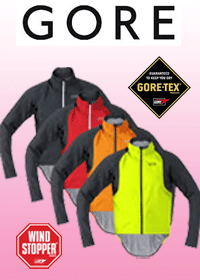 W.L. Gore & Associates is a leading company in the manufacture of components for the production of technical sports clothing: sells its fibers to many brands that use for clothing, shoes and accessories for sport. W.L. Gore & Associates also designs and manufactures own branded even prestigious collections of clothing and accessories for running (Gorerunning) and cycling (Gorebike).
W.L. Gore & Associates is a leading company in the manufacture of components for the production of technical sports clothing: sells its fibers to many brands that use for clothing, shoes and accessories for sport. W.L. Gore & Associates also designs and manufactures own branded even prestigious collections of clothing and accessories for running (Gorerunning) and cycling (Gorebike). A triathlon engaging, decided only in the last few meters of the race, involved the large audience present at Cerveteri, thanks to multi-lap formula provided by the Organizer Gianluca Calfapietra, which allowed viewers to follow closely the stages of the race.
A triathlon engaging, decided only in the last few meters of the race, involved the large audience present at Cerveteri, thanks to multi-lap formula provided by the Organizer Gianluca Calfapietra, which allowed viewers to follow closely the stages of the race.
Three hundred athletes, coming mainly from the regions of Central Italy (Tuscany, Umbria, Lazio, Campania), took off Thursday, may 1: jumping in the water despite the sea was not certain of the more relaxed. "The rough seas-tells Calfapietra – prevented the boats out at sea. We could use such as emergency vehicles and well water scooter 5 support provided by GAS JET, thus ensuring safety even in the swimming test. "
Both the men's and women's race turned out to be absolutely fascinating, with several athletes ready to put the seal on this second annual sprint triathlon of Cerveteri. Among men, at the end, it was the combination of Minerva Rome consisting of Faulkner and Ciuti (later arrived in order) to fight for the victory in the Sprint. The podium was completed by ABO Bakr, arrived at the finish line about 20 seconds later.
The Minerva Rome, besides winning the men's race, dominated the women's trial, where he managed to place even 5 athletes in the first five positions. Even in this case it is served a Sprint to determine the order of arrival: the young Tamburri has preceded the Pozzuoli and Faulkner.
Triathlon sprint di Cerveteri (750 m swim – 20 km bike ride – 5 km run), although only in its second edition, has garnered rave reviews from athletes and spectators. The multi-lap formula (multiple passes of the athletes during the hamlets of cycling and running) helps make even more spectacular this discipline, fascinating in itself.
"The close collaboration with the city of Cerveteri and the Departments of Sport and environment – concluded Calfapietra – and great willingness demonstrated by Assobalneari Marina di Cerveteri, associazione nautica sea, plant Field Ezio at the Tower, Ocean Surf factory and Six plant allowed us to set up in just two years the race Rank of absolute importance.
The project is still growing: in conjunction with sport Alderman Lorenzo Crosses we are already thinking about 2015, aiming to bring in Cerveteri a race able to further increase the number of participants ".
The "third time Forhans", based on a pasta party facilities were open to everyone (and seats) concluded the splendid sports day organized by the Forhans Team.
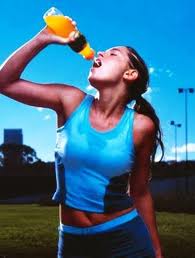 We are ready to go with our car we loaded the luggage, tires inflated and made full of gasoline. Ready on.
We are ready to go with our car we loaded the luggage, tires inflated and made full of gasoline. Ready on.
Physical activity means more or less the same kind of attention, does it have the technical equipment is in order (we know how far have our shoes? wear garments adapted to outdoor temperature?) that we're replenished suitably before. If the journey is short enough fuel in the tank at the start, pardon I meant in the body, otherwise we must carefully plan supplies. We certainly remain stuck in the middle of the trip!
A race under 10 kilometres is not equivalent to a long Highway trip, rather the transfer from one end to the other of the city. During training (or race) then you do not need to feed but it is very important to drink, especially when it is hot.
In fact, when we run the body temperature rises and our body to avoid overheat produces sweat, a mixture of water and minerals that exposed to the air (or rather in the wind since we're running) lowers the degree of heat. Brilliant, but unfortunately in this way we lose both liquids that ions of sodium, potassium and chloride, which are fundamental elements to operate all our cells, brain and muscle included. You need to reintegrate. If we don't, the provision expires progressively and there are many risks, from cramps to dehydration.
The general rule is "a SIP of water (or salt) each 5 miles": to be considered as the cornerstone of care for themselves for each runner. Do not expect to have thirst for taking the supply, it will already be too late. For this reason it is important to drink regularly, almost every occasion (in the refreshments are placed every 5 k)
Here we begin to make a nice picnic out door, ones that require an intermediate step to the gas station to get home without a care of mind.
During a half marathon (and anyway for rides that exceed an hour) over a drink you must make use of some dietary supplement. We are entering a field of great subjectivity, such as a runner very trained and expert on long distances can safely without it. When to grips for the first time in a match like that is rather well take something around 15 kilometer, so as to restore the sugars and get through by continuing to push to the maximum. Although our goal is not to win any race but just keep us in shape (maybe slim down a bit) the behavior to keep it the same. To burn fat you need to have a little sugar can trigger combustion, as saying that fuel (FAT) without oxygen (sugars) can not catch fire (i.e. produce thermal energy in the case of an engine and kinetics in the case of a runner).
It's quite difficult to ingest solid foods while you run, they exist on the market so-called carbogel, namely Pocket costuituito gel sachets from sugars (glucose, fructose, maltodextrin), vitamins, amino acids, branched and often caffeine. There are various types and flavors, the foresight is always trying them before training because everyone has their own tastes and their reactions. Being very gentle should be taken just before drinking, but otherwise are not metabolized correctly (and especially seems to be in hell for the thirst).
With a little time, and some makeup experiments (such as walking for some stretch after the refreshment post) you can get used to eat more ... ing: bananas and biscuits are among the most common foods in all races in the world. They have the great advantage of being much more pleasant of carbogel but are also a bit more challenging in terms of ingestion and digestion.
Now we're just leaving for the long summer holiday, those who lead us from northern cities to the beautiful beaches of southern Italy. It's a long journey, supplies should be carefully planned.
The first marathon you'll probably need to eat several times (especially from the 25 kilometer onwards) but once your body has learned to be more efficient in those gaits and for those distances you will arrive to a single "pit stop", usually at the 30th kilometer. There are also those who exceptionally gifted and talented, is able to get to the bottom without eating, but they are very few and fortunate athletes.
Who goes beyond the marathon to get up to the legendary ultra (also 100 km all of yarn) or competitions as le Grand bike Fund (well over 200 miles) rather than the Ironman (3.8 km swimming, 180 km cycling and travel 42) eating becomes mandatory. In these cases, the supplies are opportunities to change from race to walk (or even break). You can switch between sweet and savory foods (sandwiches with ham, parmesan cheese, chocolate, nuts and dried fruit) and a big help is given by sugary drinks and sodas (both because they provide energy both because "flow" very efficiently!). In short, there is no banquet table but shortly we are missing. On the other hand such distances involve consumption of thousands and thousands of calories, cannot get down without refuel properly. After some time the body where it can takes what he needs, beginning to remove proteins that consist of muscles, as saying that "consumes", a gruesome scenario.
And once you get to the finish line? Well, even on what they eat after the course there are many things to know.
(by e from Runlovers)
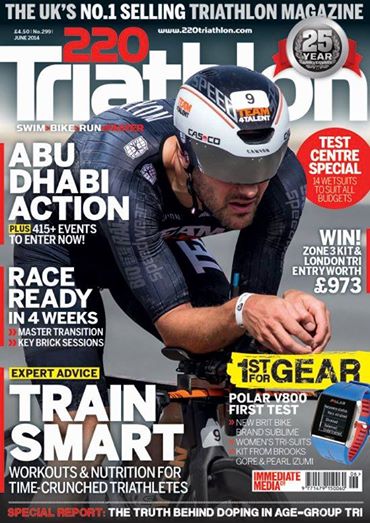 After a winter of testing, dedicated to redesign and refine the suit from Vanquish, ZONE3 triathlon is pleased to let you know how the famous 220 TRIATHLON magazine industry considers this wetsuit triathlon.
After a winter of testing, dedicated to redesign and refine the suit from Vanquish, ZONE3 triathlon is pleased to let you know how the famous 220 TRIATHLON magazine industry considers this wetsuit triathlon.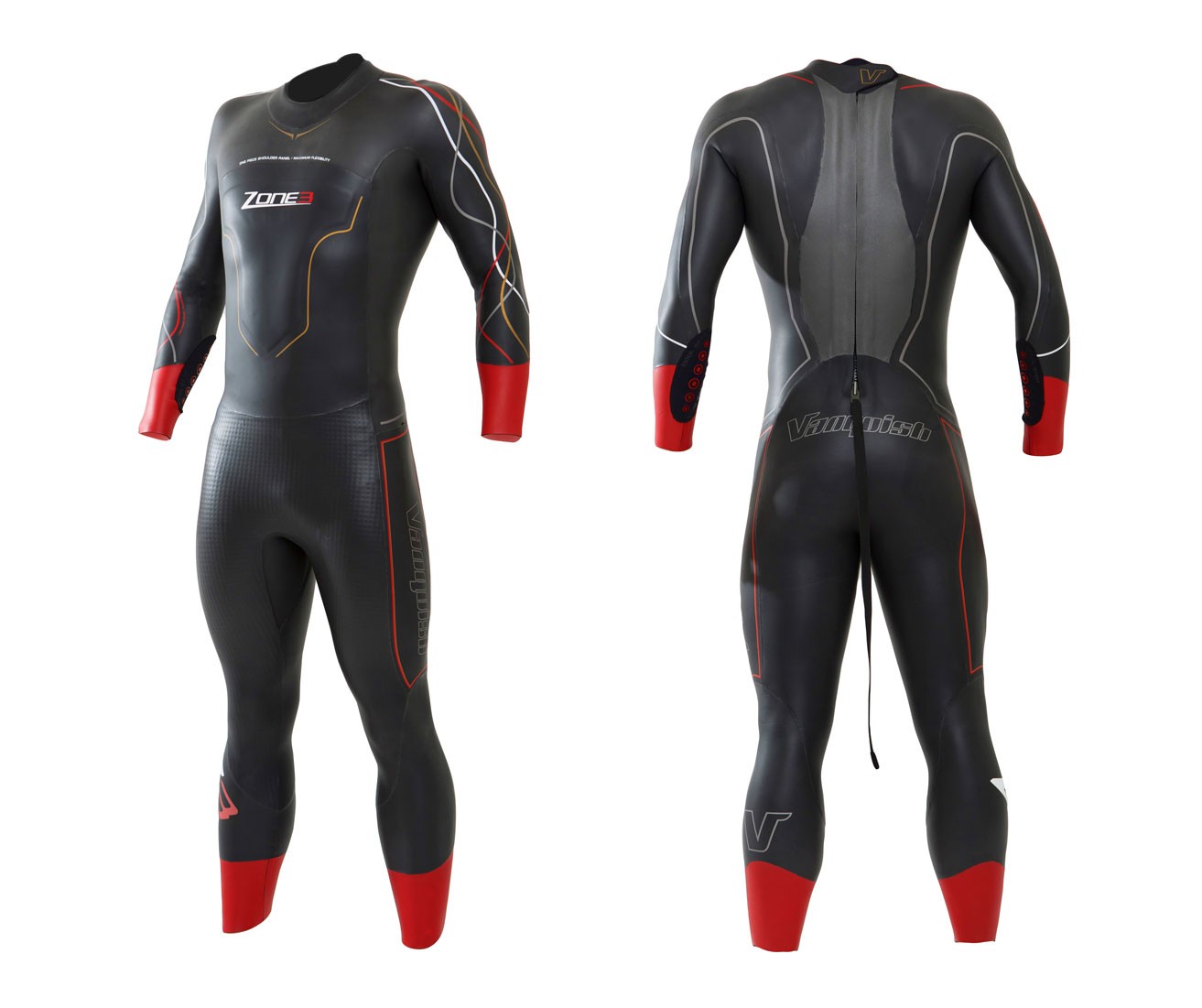 You can buy the mute, ZONE3 including the Vanquish, on-line on www.motusport.it, click here: ZONE3 TRIATHLON WETSUITS
You can buy the mute, ZONE3 including the Vanquish, on-line on www.motusport.it, click here: ZONE3 TRIATHLON WETSUITS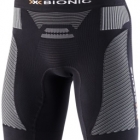 These are the impressions of Runlovers for running pants X-BIONIC, one of clothing best-sellers by MOTUS. This short pants X-BIONIC's running PANTS now accompanies by 2.1 kilometers and kilometers many our customers who have purchased. Here is what RunLovers writes about the X-BIONIC RUNNING PANT 2.1
These are the impressions of Runlovers for running pants X-BIONIC, one of clothing best-sellers by MOTUS. This short pants X-BIONIC's running PANTS now accompanies by 2.1 kilometers and kilometers many our customers who have purchased. Here is what RunLovers writes about the X-BIONIC RUNNING PANT 2.1To RunLovers like experimenting and trials leaders and uses for which it is expressly designed. We use the pants to go riding? No, we push up to this, but read a bit ...
After trying the shirt from running Speed RT 2.2 Shirt we wore the X-Bionic Running Pants RT 2.1. The feeling that damage is very clear:. I'm definitely comfortable, are not obtrusive, yet sustain and protect very well.
All because behind this chapter there is an in-depth study and a series of very sophisticated technologies: profiling the fabric according to the two-step patented 3D BionicSphere ® Front-System (used to capture moisture and allow it to evaporate), 3D Intercooler ™ structure on the thigh that gathers moisture and distributes it evenly to produce evaporation and compression technology X-BIONIC ® Partial Kompressiondesigned to compress the muscle without blocking skin moisture and heat.
The feelings that you feel are correndoci can be summed up in one word: spectacular. The trouser fits perfectly to our shapes and ensures high breathability while keeping dry and muscles, it seems strange to say, pampered.
The legs, the muscles of the thighs, in particular, thank you for choosing to use this pair of pants. There we were in so well that we decided to try it too ... on spinning bikes! In this case – that is not their stated use-easy to turn out up to 1 hour sessions in which you don't need the "frying pan" protect the buttocks. Very good feeling of support and compression of the quadriceps and also likes the fact that life is quite high and then riding down not too "cutting" the belly.
The coolest thing was finding out that are also perfect for the water where argue well and give a real dumb effect helping the waterline the legs, claiming not just thighs and pelvis.